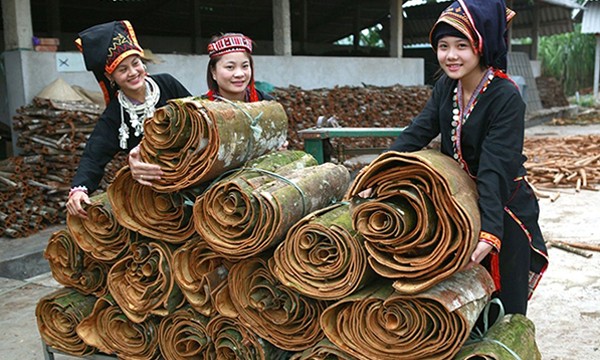Vietnam – Cinnamon is a key crop in socio-economic development, hunger eradication and poverty alleviation of farmers in northern mountainous provinces such as Lao Cai and Yen Bai. In order to improve product value and sustainably develop cinnamon area, localities are aiming to form areas of clean raw materials and organic production.
Yen Bai is one of the localities with the largest cinnamon growing area in the country today, with 81,000 hectares. Cinnamon has opened up opportunities for local people to develop their economy and increase their income. In order to develop cinnamon trees sustainably, in recent years, Yen Bai province has increased the mobilization of the People to develop the area along with the care according to the organic cinnamon growing process, in order to form an organic cinnamon material area standards for large-scale processing.

Taking the lead in developing the organic cinnamon area in Yen Bai is the people of Dao Thinh commune (Tran Yen district). Thanks to organic cinnamon cultivation, the value of cinnamon products of Dao Thinh commune is about 50% higher than that of conventional cinnamon products; thereby, opening up great opportunities in trade promotion, export promotion, creating a basis for increasing people’s income.
Mr. Chu Duc Hien, Chairman of Dao Thinh Commune People’s Committee, said that the whole commune has formed 500 hectares of organic cinnamon. The good point in this model is that organic cinnamon products are produced in a way that does not use any harmful chemicals, and at the same time, focuses on the balance of the natural ecosystem, with the aim of is to maximize the health and productivity of the community in terms of soil, crop, livestock, and human life.
Or as in Lao Cai, the locality ranked third in the country by experts in cinnamon quality, is also promoting the construction of clean raw material areas, producing organically. Lao Cai currently has 3,671 hectares of recognized organic cinnamon area, distributed in Van Ban, Bac Ha and Bao Yen districts.
Cinnamon products (shells, essential oils, etc.) of Lao Cai have been promoted by state management agencies and enterprises at domestic and foreign trade promotion fairs and seminars (Dubai – United Arab Emirates, Paris – France, Moscow – Russia) … step by step linking tourism with the promotion and introduction of products of the cinnamon industry to promote product consumption.
According to a report by the General Department of Forestry, Vietnam currently has a total cinnamon area of nearly 170,000 hectares, concentrated in the provinces of Lao Cai, Yen Bai and Quang Nam. The total reserve of cinnamon bark is estimated at 900,000 – 1,200,000 tons, the average yield is 70,000 – 80,000 tons/year. Vietnam’s anise cinnamon export value in 2020 will reach about 245.4 million USD, in 2021 it will reach about 274 million USD and is expected to reach about 276 million USD in 2022.
Along with that, cinnamon has a lot of room, because the demand from high-quality markets such as the US and Europe is constantly increasing. Besides, Vietnam also benefits from many new generation FTAs such as CPTPP, VPA/FLEGT Agreement. Many import and export taxes on wood and wood products are reduced or eliminated.


 中文 (中国)
中文 (中国)